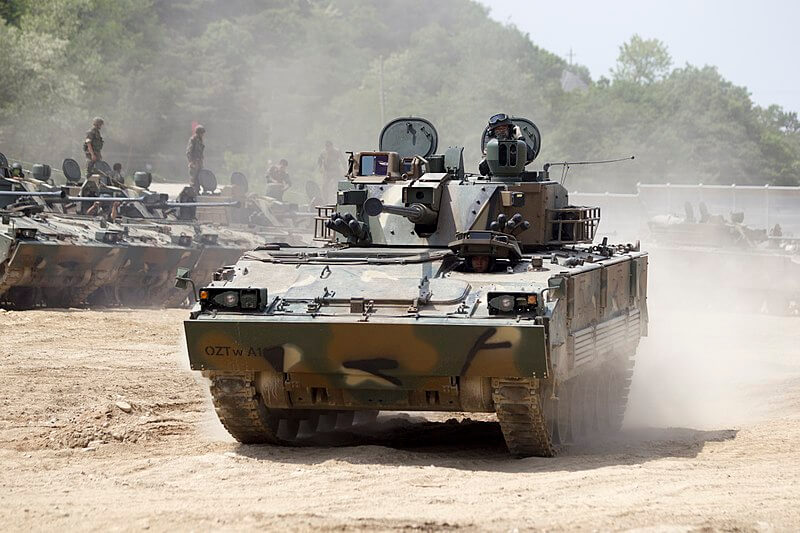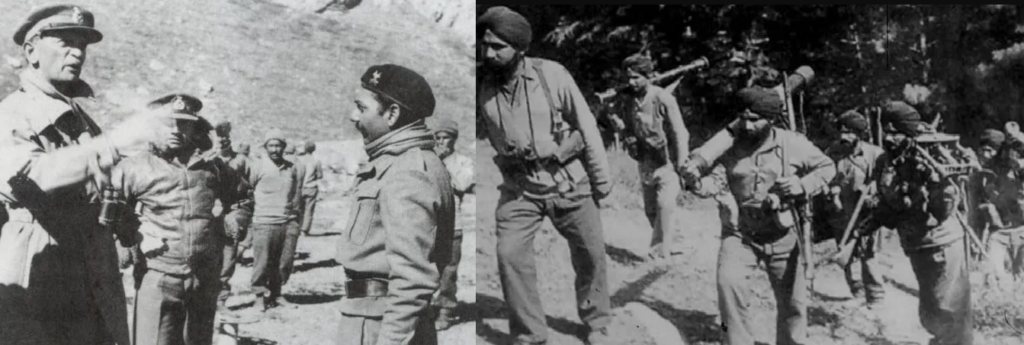
Two years ago the Ministry of Defence issued an RFI for the procurement of light tanks under Make in India. The Army requires a light tank with a combat weight not exceeding 25 tons and be modular and upgradable. Integration of cutting-edge technologies like active protection systems, all-around situational awareness, and integration of tactical drones are some additional attributes included. The AON granted in December last reserves 59 of the 354 light tanks for DRDO.
The remaining 295 tanks will be manufactured under the government-funded design and development project for the industry in the ‘Make-1’ category. The cost of acquisition of the Zorawar light tank is expected to be around 16000 crores. The Army had strongly pitched for all 354 tanks to be produced by the private sector under the Make-1 category. But DRDO’s Combat Vehicles Research and Development Establishment (CVRDE) was already working to develop a light tank prototype with private sector giant Larsen & Toubro as the “lead system integrator”. It was given the light tank project in November 2021, with a deadline of three years i.e. November 2024.

Complex programs, particularly those using a time-based strategy of fielding, require a unique set of considerations to achieve success. The light tank falls into the category of a complex system requiring the integration of a no of sub-systems to deliver the required performance capability. The urgent nature of the capability gap at LAC necessitates a time-bound development of the platform with no time overruns. In previous armored vehicle acquisitions, the procurements were based on a clearly defined threat. The Army used to draw on immense amounts of information about known threats. For instance, the Army created the requirements for the T90 tank based on the type of platforms (mainly T80) that were likely to be fielded across the Western borders and concluded that the T90 was ideally suited to meet the operational challenges. In the case of the light tank, it is not only the availability of combat systems across the LAC but also operational capability gaps of current systems deployed at LAC, that should be included as KPPs.
Key Performance Parameters are those characteristics of a system that are considered critical to the development of an effective military capability and make a significant contribution to mission success. One hopes that while framing the requirements such mission engineering has been carried out. The acquisition of the light tank is not a case of acquiring a mature system like T90.

It is a design and development effort to engineer a combat system specific to our needs, possessing the required durability to operate in the harshest of terrain and weather conditions (super high altitudes), for which no foreign tank has ever been designed. Consequently, an evolutionary approach has to be the kernel of this effort. The evolutionary approach delivers capability in increments, recognizing up front, the need for future capability improvements. The objective is to balance needs, and available industrial capability with resources and put a capability into the hands of the user quickly. The success of the strategy depends on consistent QRs that are refined in stages and not on the fly. It has to accept a balance with the availability of local technologies and sub-systems and manage risks in the interim. It leads to time-bound development and manufacture of systems providing increasing operational capability as indigenization progresses and system maturity is achieved. Consideration of two system engineering processes becomes indispensable.
Mission engineering

In the first ever Indo-Pak War in 1947-48, as part of Operation Bison the Indian troops led by then Maj Gen K.S. Thimmaya secretly dismantled and carried a squadron of Stuart Mk-VI tanks. The credit for this among others goes to the soldier craftsmen of the Indian Army’s Corps of EME who dismantled and helped transport the tanks in absolute secrecy at night and assembled them again once they reached the freezing cold Zozilla pass at a height of above 11,000 ft above sea level. The Pakistanis were so surprised that the soldier. This proved to be game changer and led to the capture of Zojila. It was a fantastic achievement, tanks had never been used at this altitude before. The light tank has to be engineered for such contingencies.

An analysis of the RFI of the light tank gives an impression that the Army wishes to employ the platform to primarily defeat enemy armor, a fallout of the prevailing mindset that a tank was evolved to defeat a tank. The RFI states in para 2(h)….To defeat tanks / ‘A’ vehicles, UAVs, soft-skinned vehicles, and PGMs, indicating an overwhelming desire to acquire a wonderwaffe. The light tank deployment should essentially be to establish an operational capability overmatch through an enduring equipment capability to rapidly engage and destroy a wide range of stationary and mobile threats at LAC.
It should have the capability to employ all types of munitions with lethal effects under all weather conditions. It should be able to provide rapid and lethal direct fires to support assaulting infantry. With its 105mm or higher caliber main gun, the light tank should be able to support assaulting Infantrymen at close ranges of 50- 100 m and longer ranges as happened at Zojila. The need for the direct fire of high-caliber weapons also emerged during Kargil. The tank has to deliver this lethal fire with precision against bunkers and weapons deployed on mountain peaks. As aim plus, it needs to possess the capability to destroy a variety of vehicles and light to medium tanks. Finally, it should enable rapid repair of battle damage, a striking lesson that has emerged from the Ukraine war. Hence, the need to be designed for reliability and maintainability.
Life cycle capability management

The second consideration needs to be the effective sustainment of capability readiness of the tank over the life cycle i.e. an ability to deliver an equipment capability at par with the capability possessed at the time of induction. Say, if a system had mean kilometers between failures of 350 km(mobility module) and mean rounds between failures of 200 rounds ( armament module), it should be able to deliver near similar capability while in service. Here emerges the need for reset, refit, remain, and technology insertion. MRO issues find few takers in the Army, in the overwhelming desire to acquire a superiority in weapons and munitions. Consequently even after 20 years of deployment of a platform, one finds no urgency to initiate refit and reset activities. Add to it the current intransigence on the need to modernize MRO assets and prepare them for maintenance surges of the future. A systems view is essential if an operational capability is planned to be delivered effectively when the need arises. The Russian experience in the current war has amply demonstrated the perils of vaunt and reliance on garage availability.
Engineering the light tank
It is therefore important that the development of the light tanks is taken up with a differentiation instead of treading the beaten path. The Army`s stance that all light tanks be given to private industry indicates a lack of confidence in DRDO`s ability to deliver. Surprising; as of date DRDO happens to be the only agency with the knowledge cache to design a land system ground up; having delivered the Arjun, bridge layers, Akash, Pinaka, etc. Yes, it may not have full spectrum capability and need some inputs from sub-system manufacturers abroad. But the private sector does not possess any know-how in the design and development of armored fighting vehicles or their subsystems. The BMP repowering project has amply demonstrated this capability gap. A pragmatic approach would be to adopt a strategy of collaboration; with DRDO being the anchor institution. The industry primes can be asked to submit as many digital designs as feasible. The designs are vetted by a project management group, a knowledge-empowered body led by the Army comprising users, maintainers, scientists, subject matter experts, and sub-system designers.

After the designs are analyzed from a mission and life cycle readiness point of view, the most optimal design could be selected, and the entire technical and industrial might of the nation put behind the project to bring it to fruition in the stipulated time frame. One can recount the approach of Israel in the development of the Merkava tank in the seventies. Plans to produce an Israeli-made tank commenced drawing on lessons from the 1973 Yom Kippur war. By 1974, initial designs were completed and prototypes were built. After a brief set of trials, full-time development and manufacture were taken up.
Also Read: Light Tanks- the lethal power behind India’s punch
The military officially adopted the tank in December 1979. The lead integrator was IMI (Govt owned) with participation from both public and private entities. Technologies like powerpack, communications, tracks, and advanced materials were jointly manufactured with foreign collaboration. Today more than 90% of the content is indigenous. In the case of the Arjun ARRV developed under the aegis of the Corps of EME a similar strategy was adopted, as a result of which the system has been able to meet most performance requirements in a short span of 6 years.

In the case of the Light tank, dividing the requirement between DRDO and industry could impact the economies of scale and deter foreign firms to participate in JVs. Instead, they may prefer to sell sub-systems and aggregates in a fully formed state, adversely impacting cost-effectiveness and system readiness as the Arjun experience has repeatedly shown. In fact, it may be prudent to include the requirements of all variants of the light tank to increase the total nos. to be manufactured. A production run of 1000 odd platforms (tracked and wheeled) would help stabilize system maturity and system readiness, besides assisting in the creation of an indigenous ecosystem comprising sub-system, partial system, and component manufacturers and design houses that could power the development of future land systems. Complex subsystems like the autoloader and the missile could be integrated into later versions, to avoid the complexity that could impact the reliability, operational availability, and affordability of the platform.


A comprehensive article, covering all aspects of design and development of a new weapon platform, usage and, shortcomings in lifecycle management of a weapon platform.